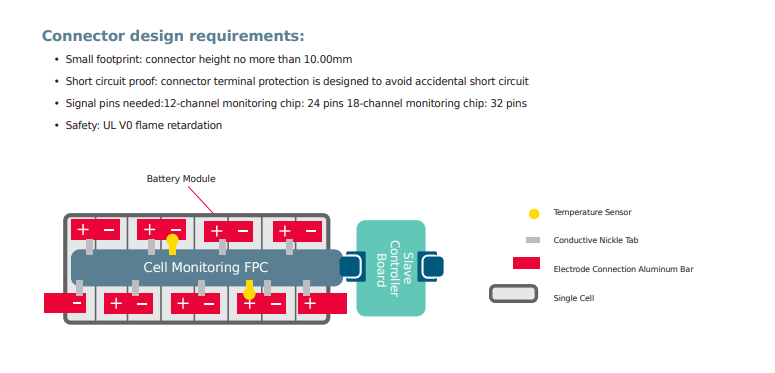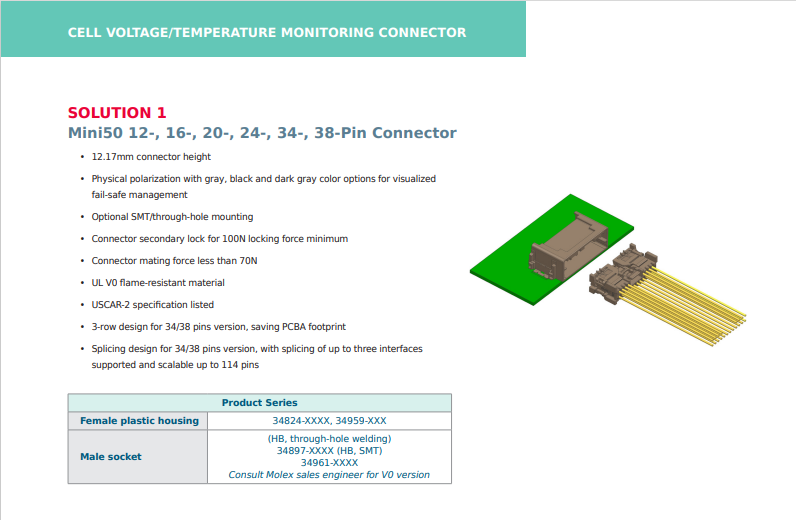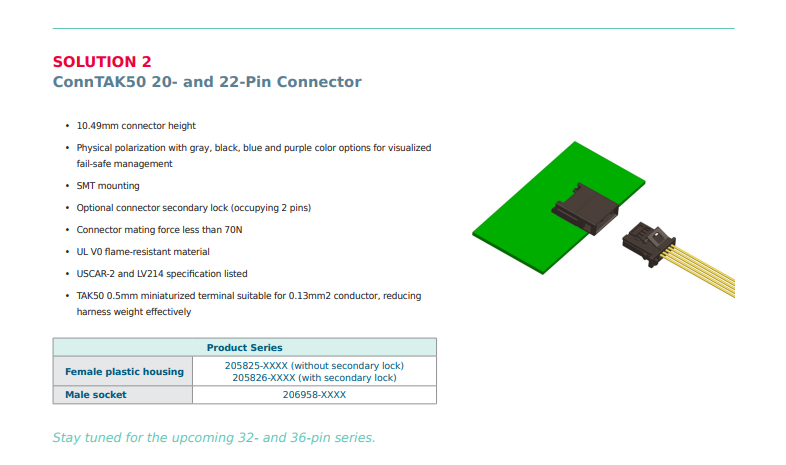Helping Boost Electric Vehicle Safety and Mileage
While Saving Comprehensive Costs
Safety, mileage and cost have always drawn the attention of the consumer and the market throughout the development of
electric vehicles. As a result, these are key aspects that call for continuous improvement by carmakers and auxiliary product
suppliers. The battery pack is one of the core components of an electric vehicle. It includes the battery system in the EIC
system and part of the electronic control system. It plays a critical role in the electrical architecture of the vehicle, serving
as the key to improving safety and mileage and reducing costs.
In recent years, battery pack design has been working toward a higher level of safety, while
also becoming more lightweight and compact. On the one hand, battery manufacturers
and automobile assembly plants pursue higher safety levels and more energy density while
reducing comprehensive costs with innovations in anode material and cell integration. On the
other hand, this industry has added new requirements for the electrical connection options
within the battery pack.
For example, to increase safety, the number of monitoring signals in the battery management
system continues growing, and the number of circuit connections required increases
accordingly. Thanks to their light weight, thinness and ease for automated assembly, flexible
printed circuits (FPCs) are gradually replacing traditional cabling and printed circuit boards
(PCBs) in the battery cell’s voltage and temperature monitoring applications. This development
has raised new requirements for connectors, such as being short circuit-proof, miniaturized and
more. Furthermore, those single-function devices that were originally discrete in the battery
pack are evolving into highly integrated comprehensive equipment, increasing demand for
larger-pin-count connectors. To improve assembly efficiency and reduce manufacturing costs,
electrical connection options should facilitate manual operation or be suitable for automatic
assembly.
After listening to our customers and developing a deep understanding of the industry’s pain
points, Molex has responded to new demands from the market, and we have taken into
consideration the characteristics of electrical connection applications within the battery pack.
As a result, Molex has launched connection solutions dedicated to battery pack connectivity,
helping our customers improve product competitiveness.
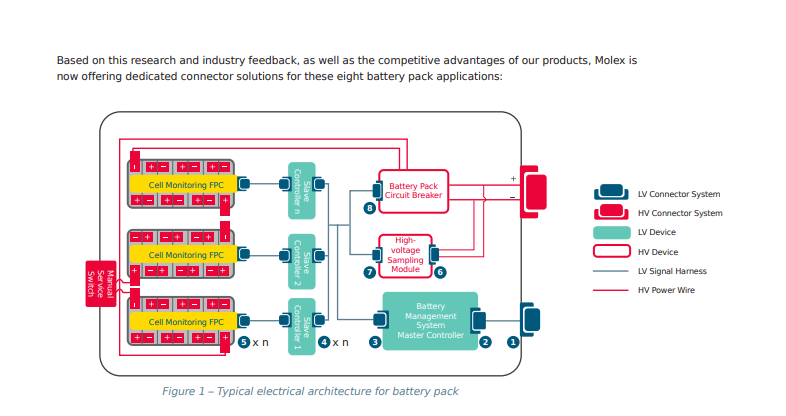


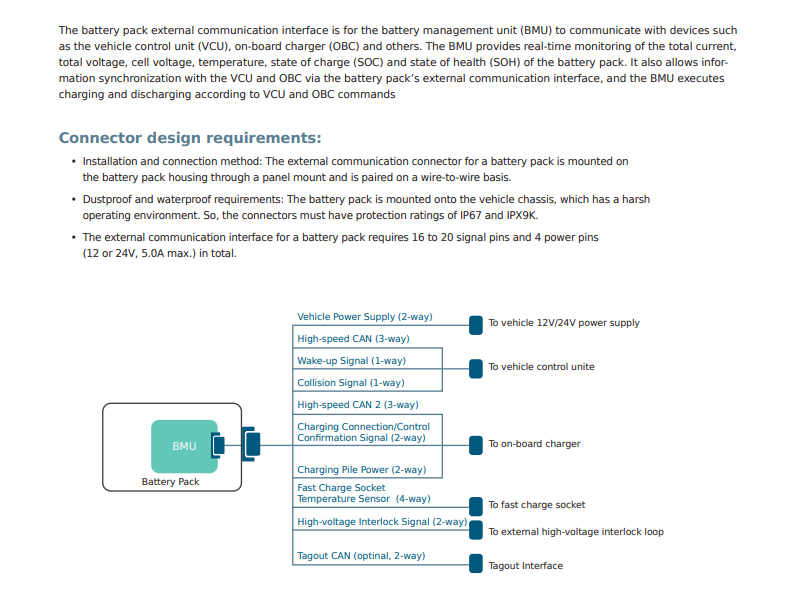
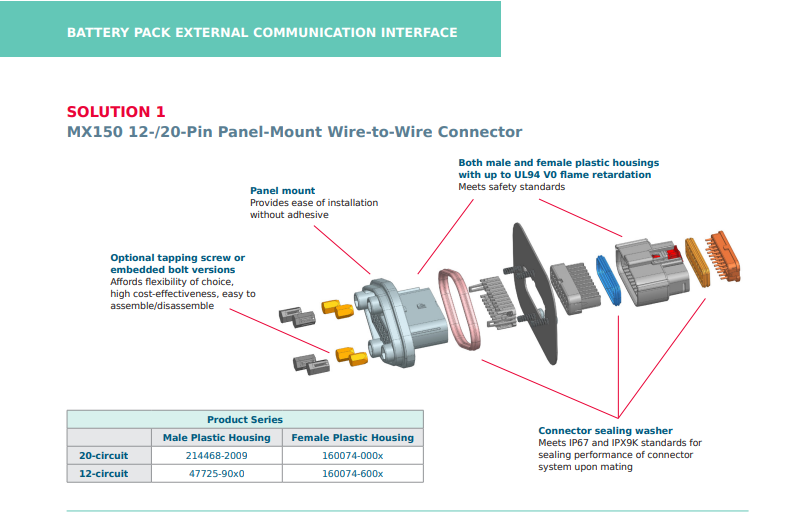
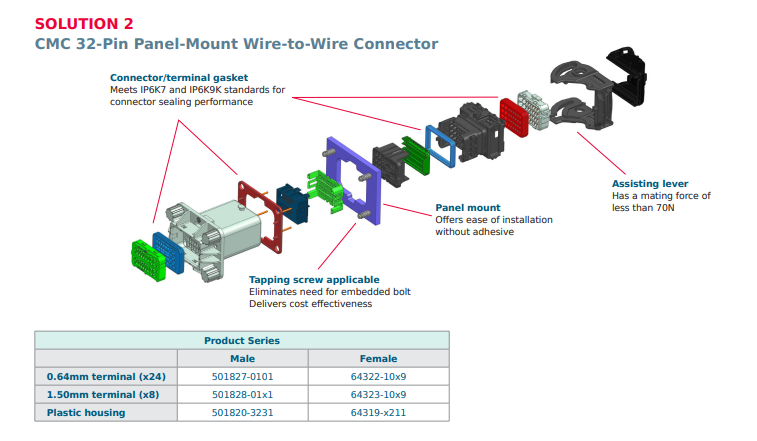
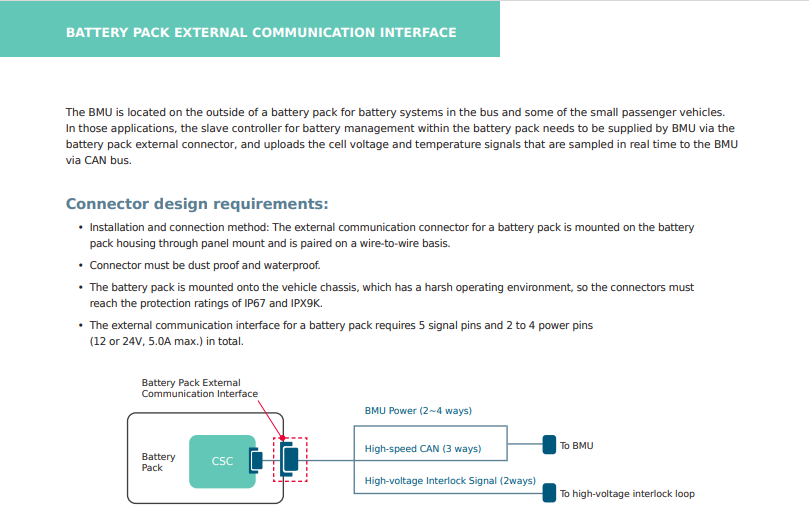
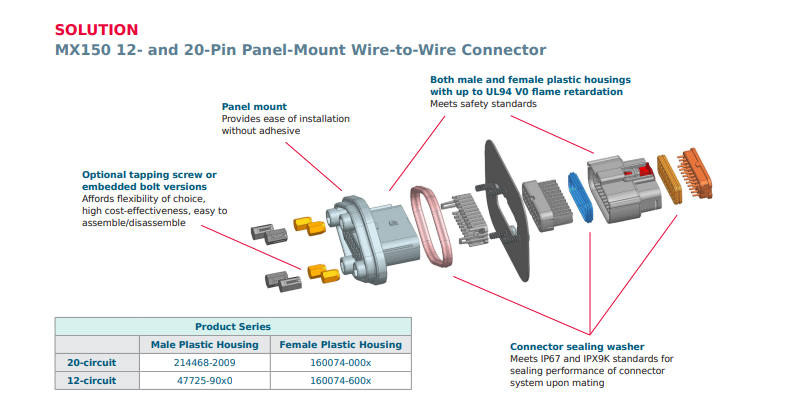

The BMU is the core control unit for a battery pack. Internally, it communicates with a slave controller via a CAN bus or daisy
chain (or is directly connected to the cell sampling circuit). It also monitors cell voltage and module temperature in real time,
and it outputs relay switching signals to the circuit breaker. Additionally, it manages the charging and discharging status for
the battery pack and oversees total voltage, total current and the state of insulation for the battery pack. Externally, the BMU
engages in information interaction with the VCU and OBC, it and it receives the charging and discharging commands from the
VCU and OBC for the battery pack.
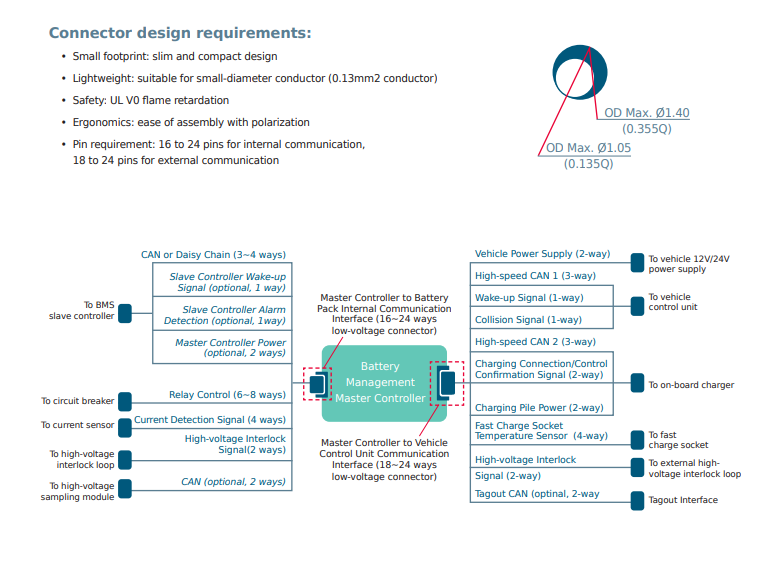
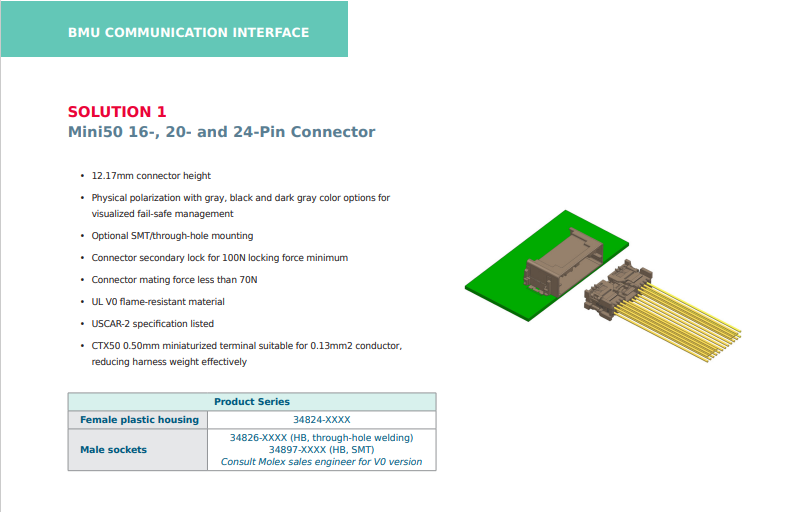
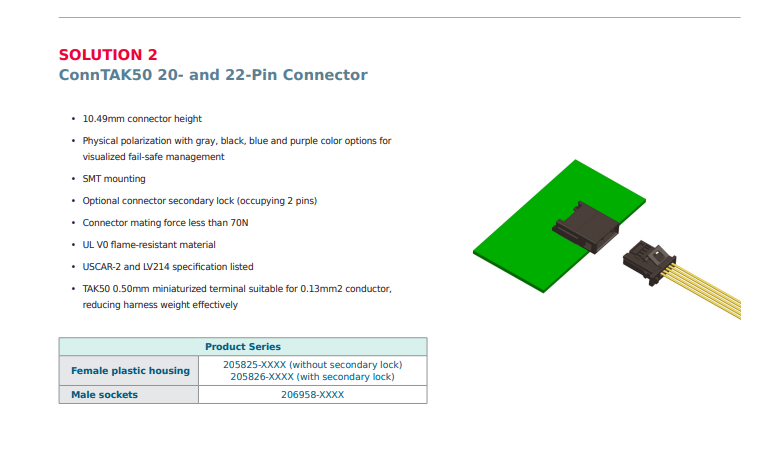

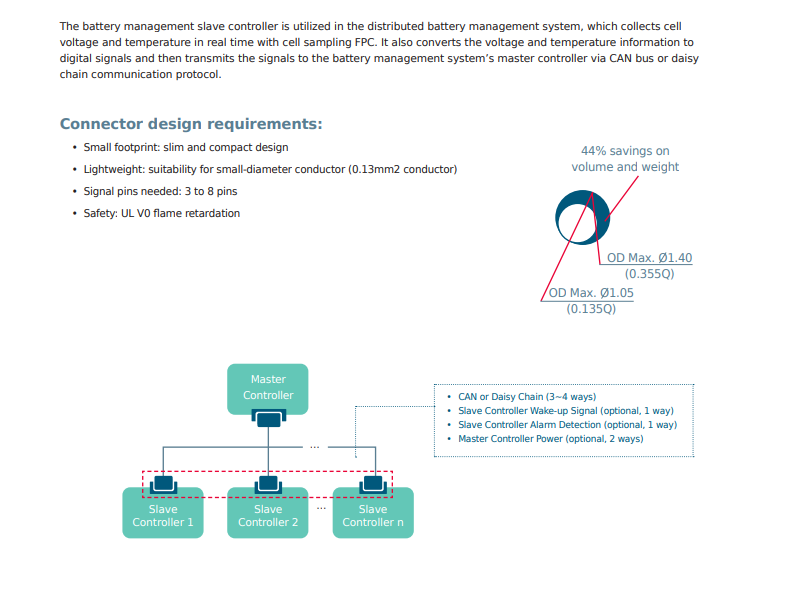
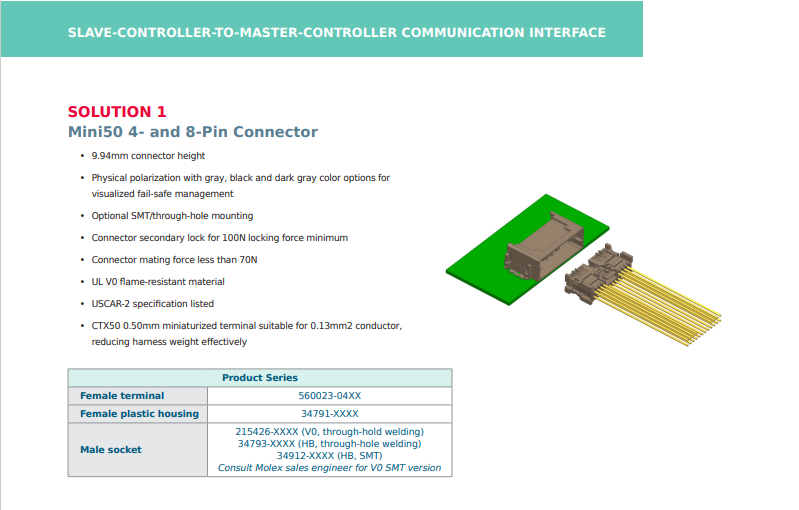
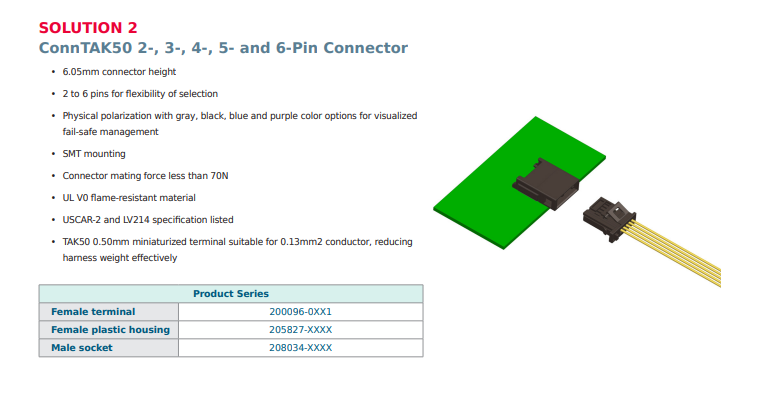


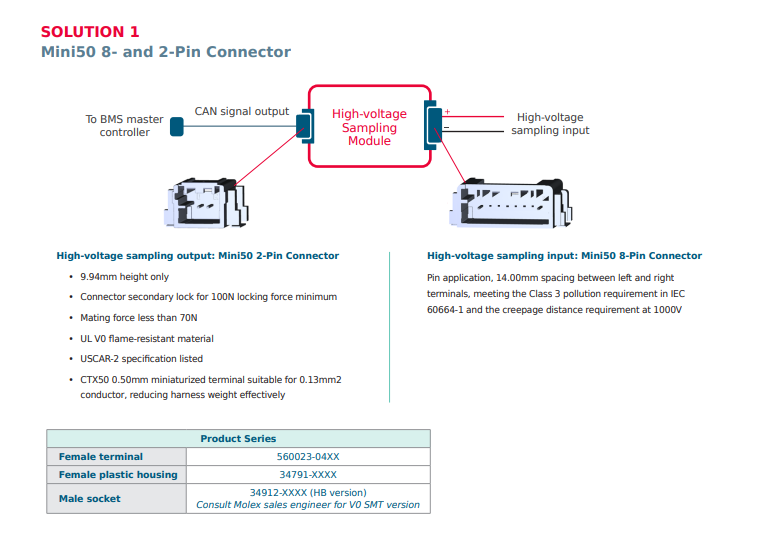
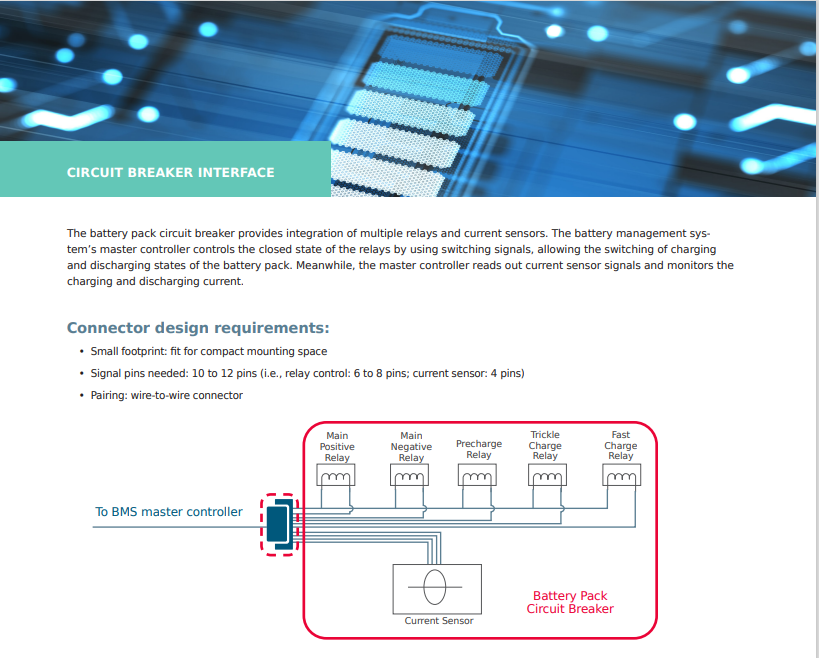
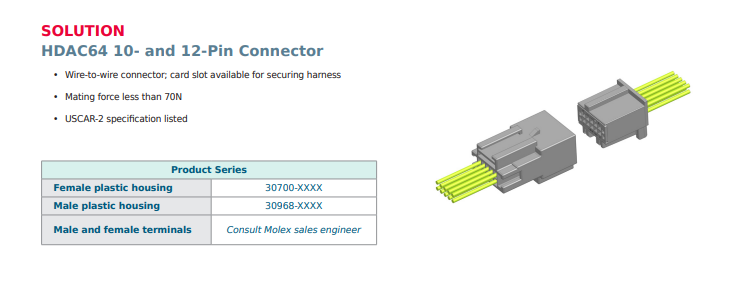

Several individual battery cells form a battery module with a specific method, in series or in parallel, in a battery pack. The cell
monitoring circuit provides real-time sampling and monitoring for the voltage and temperature of individual cells. The battery
management system switches over working status of battery packs according to the monitoring data and provides balancing
control over the cell life. When a cell encounters accidents, such as thermal runaway, the battery management system cuts off
the circuit according to established procedures, reducing the loss. It then reports the fault to the VCU on a timely basis, acquir�ing valuable escape time for people in the vehicle. In this application, an unsealed wire-to-board connector with large pin count
transmits signals. In terms of its footprint, a miniaturized connector is a very effective solution for maximum space savings for
the good of the cell module.
